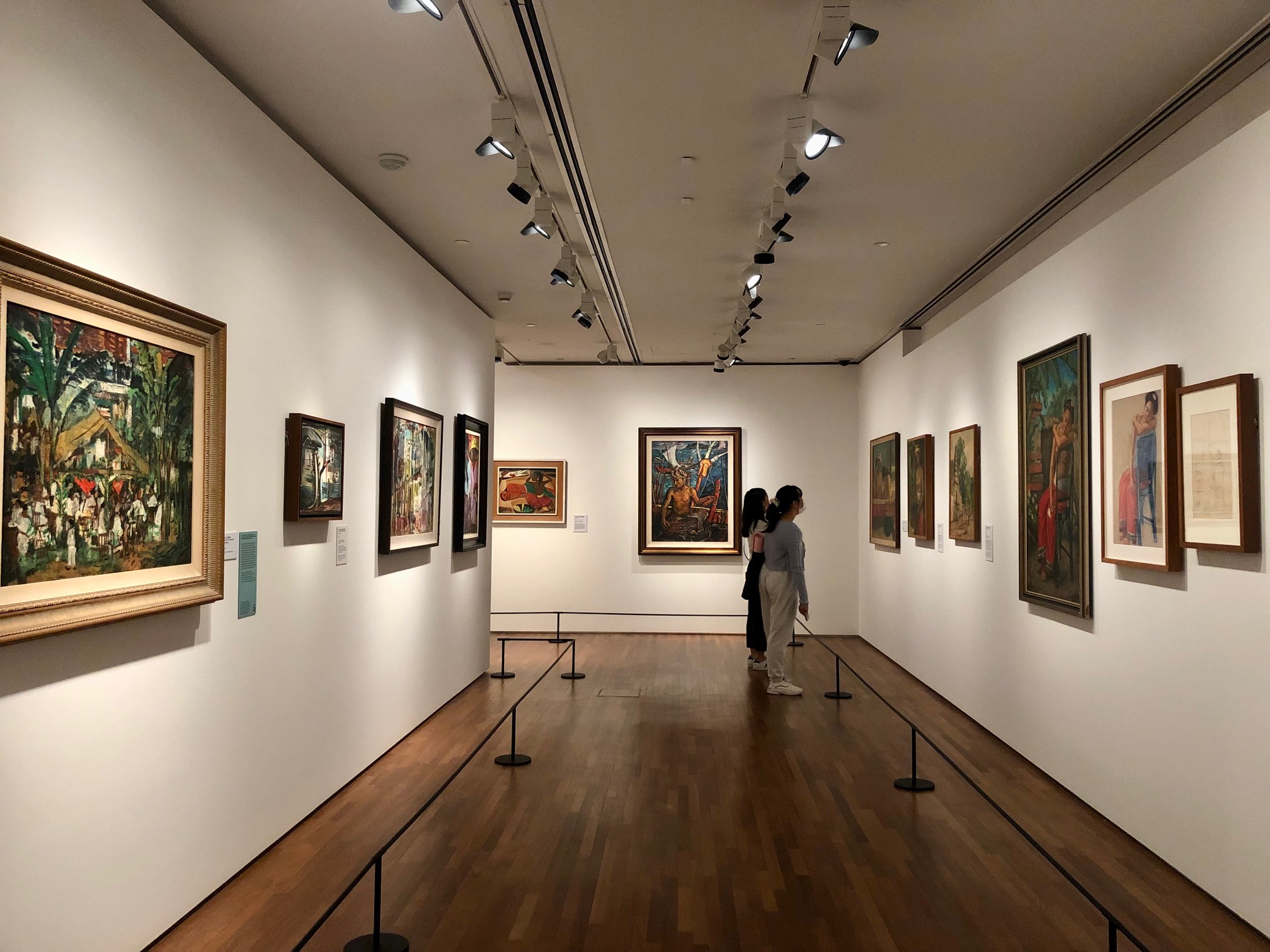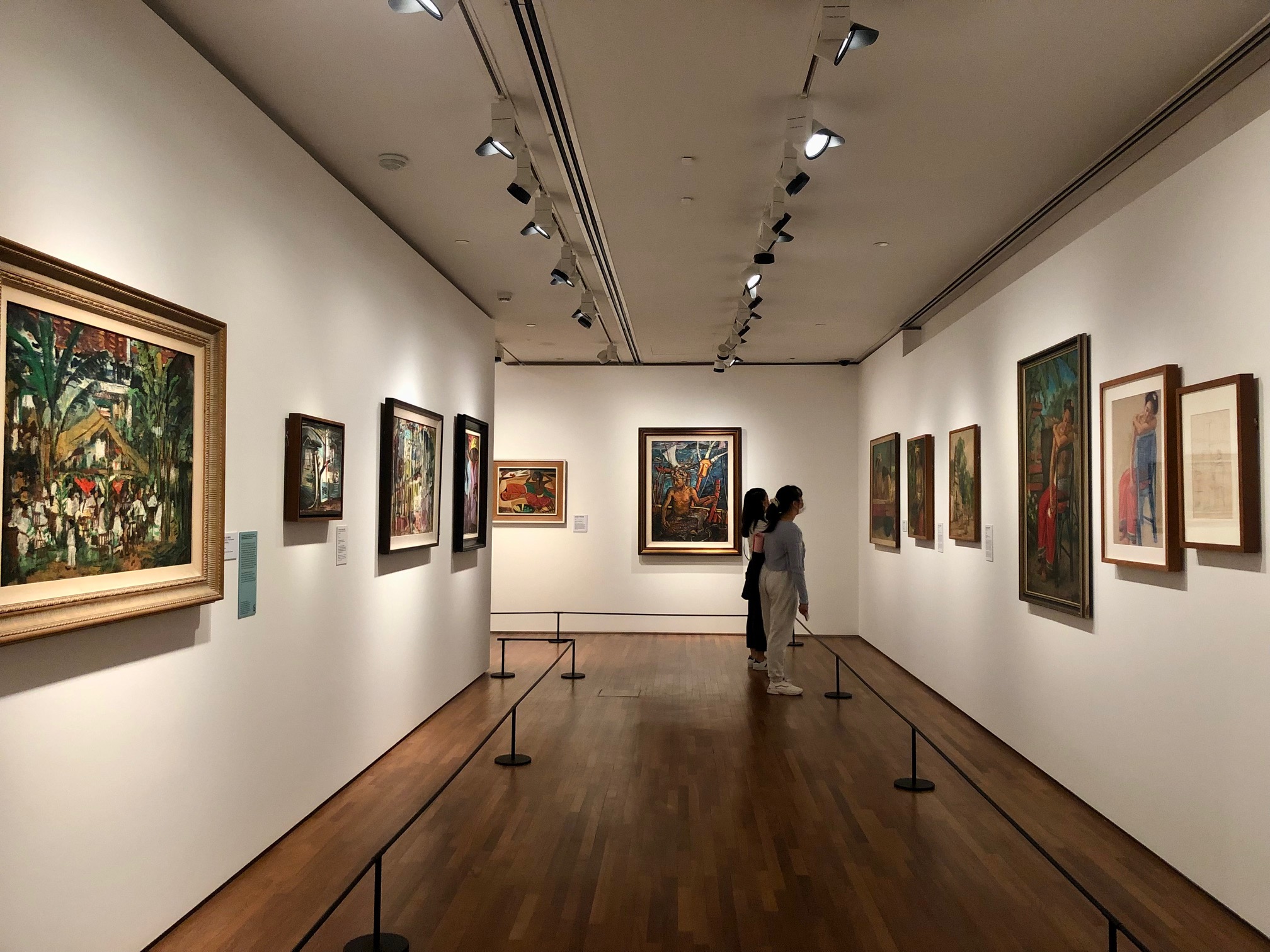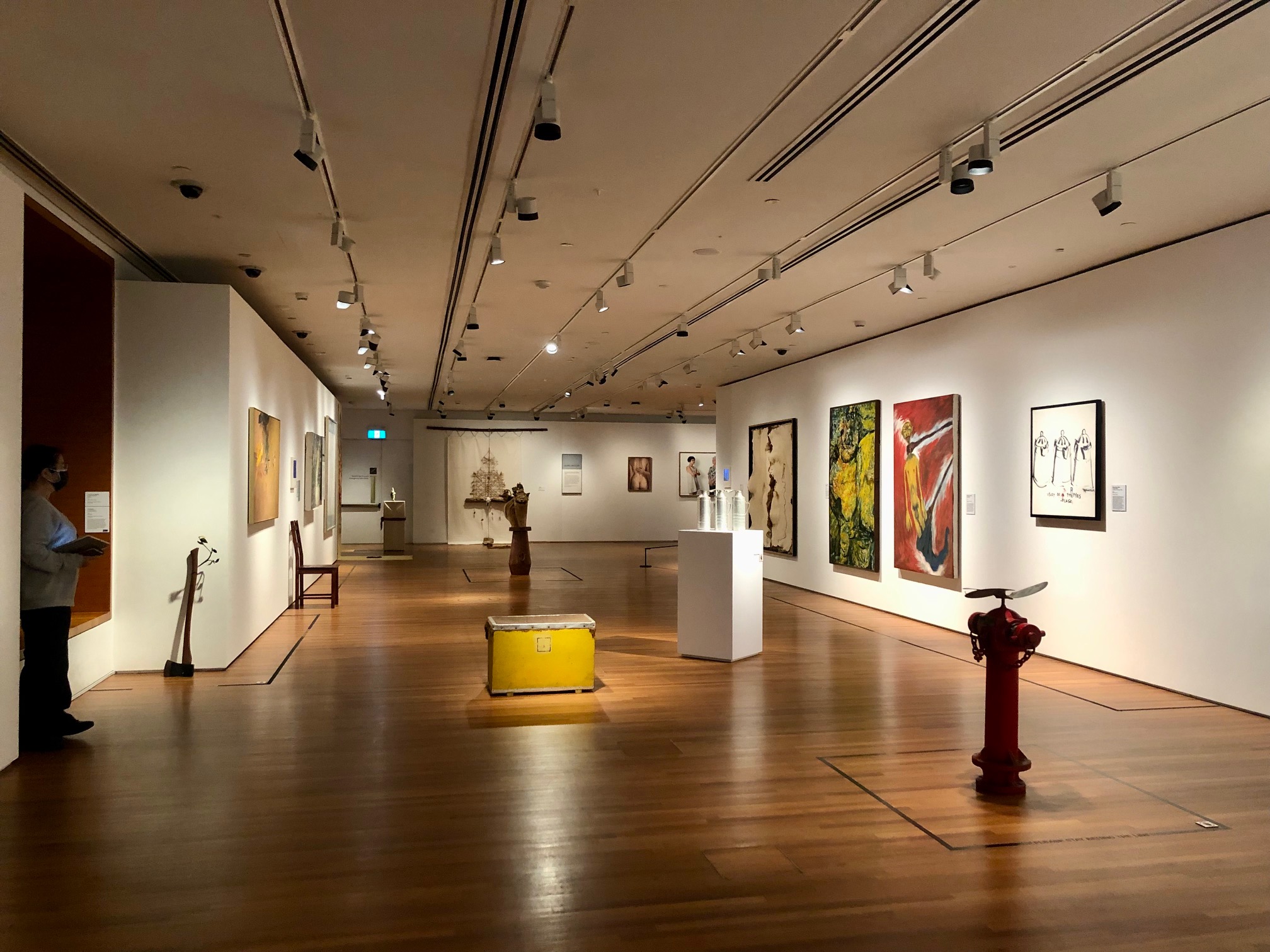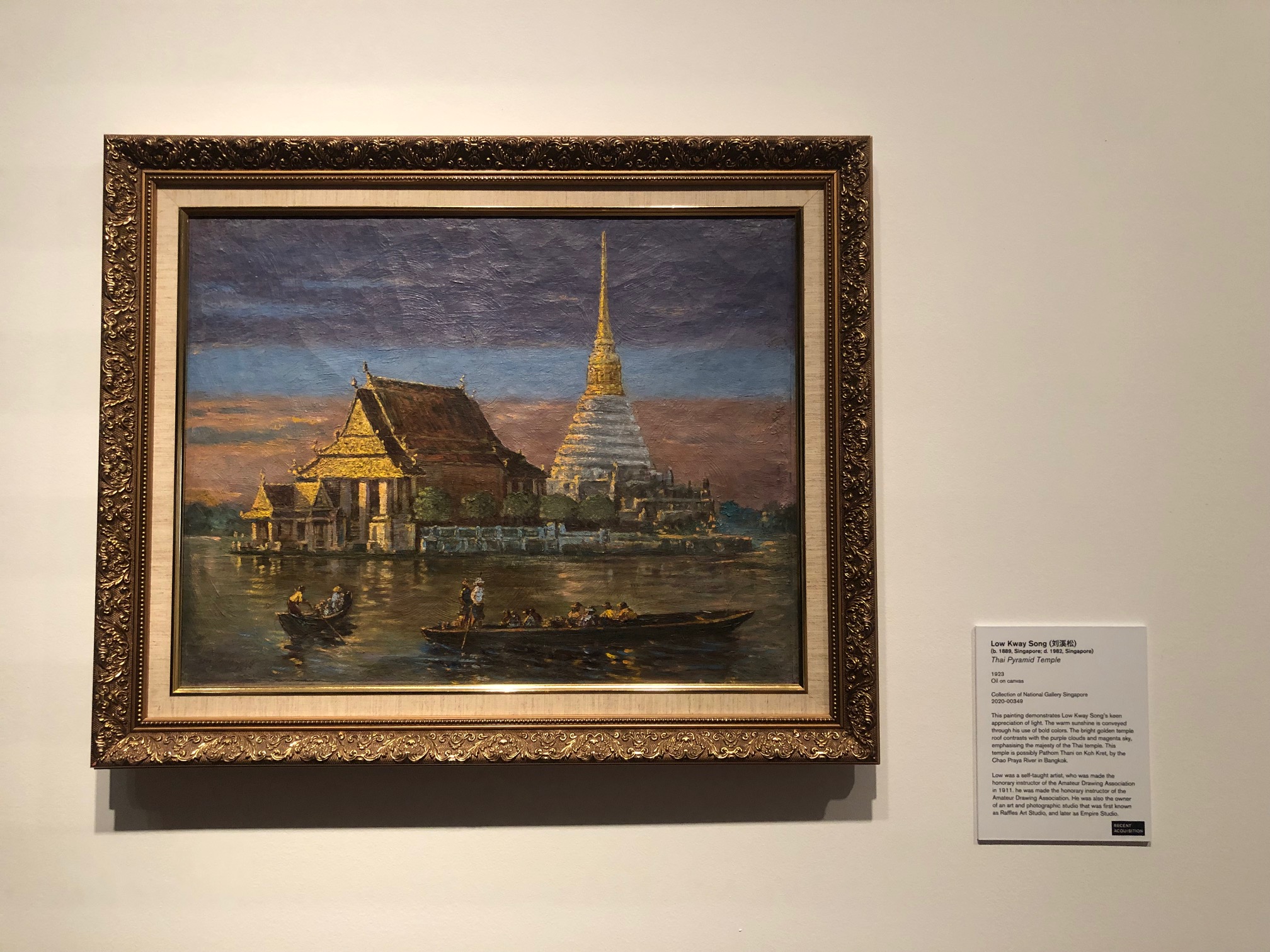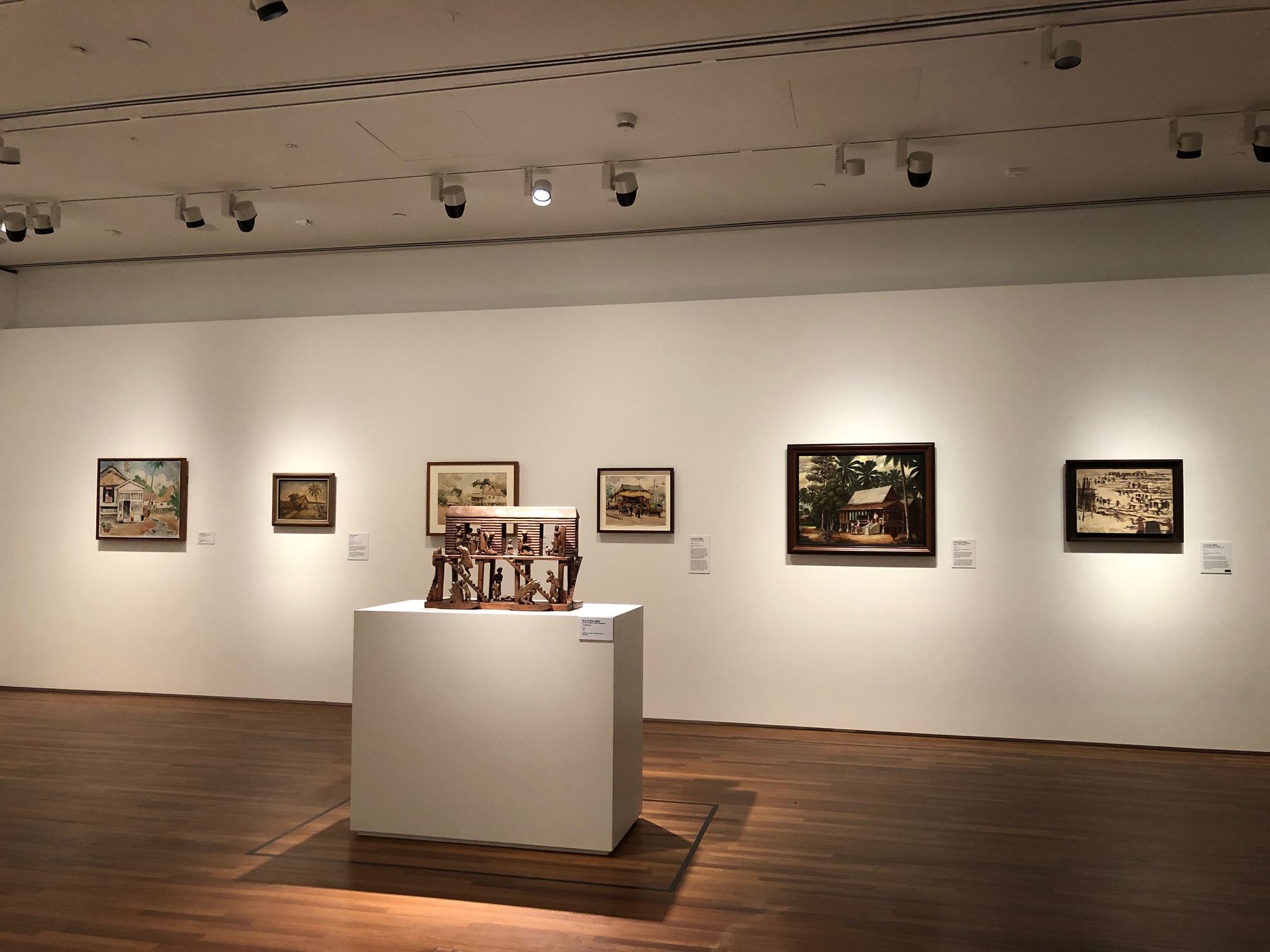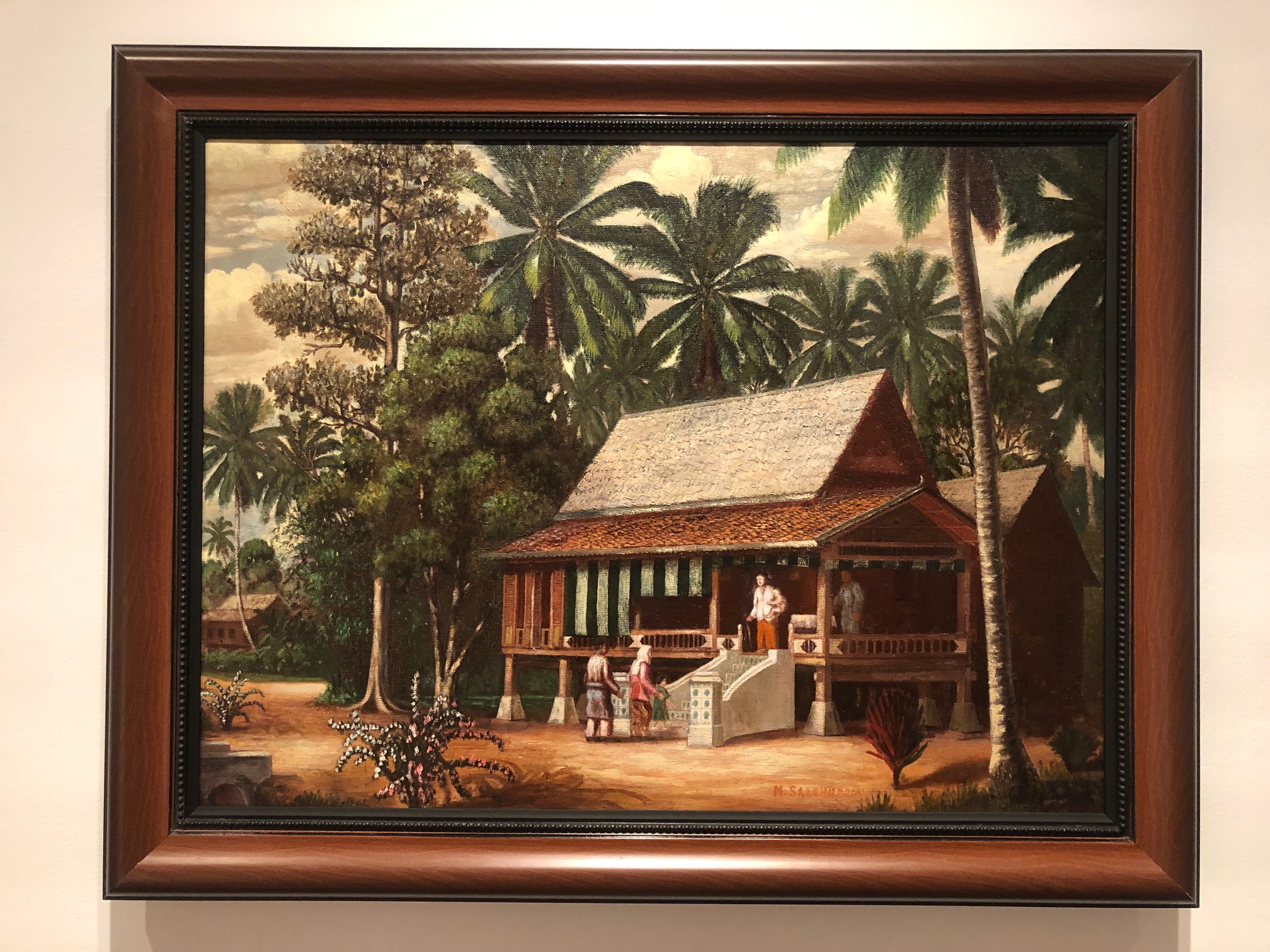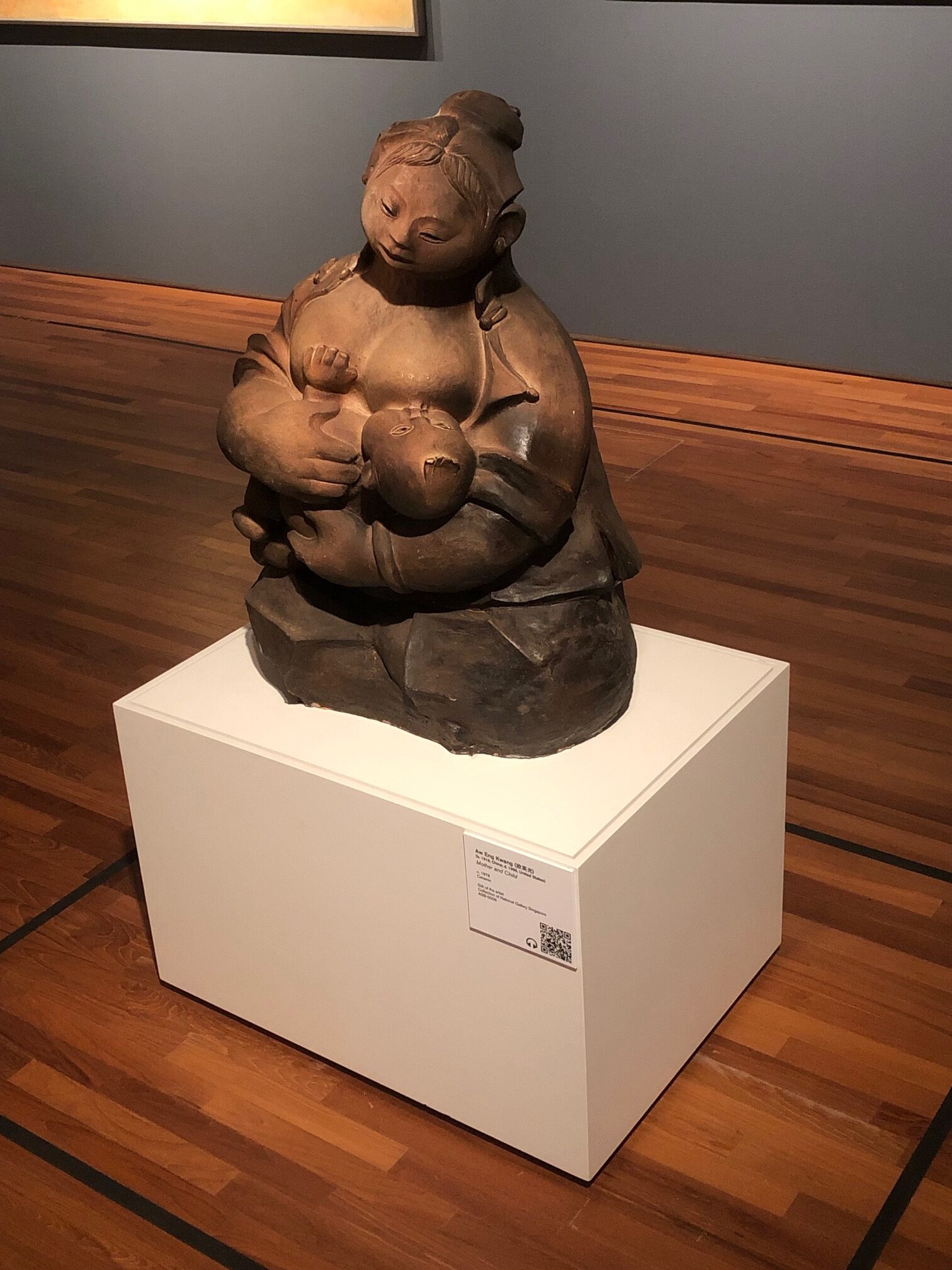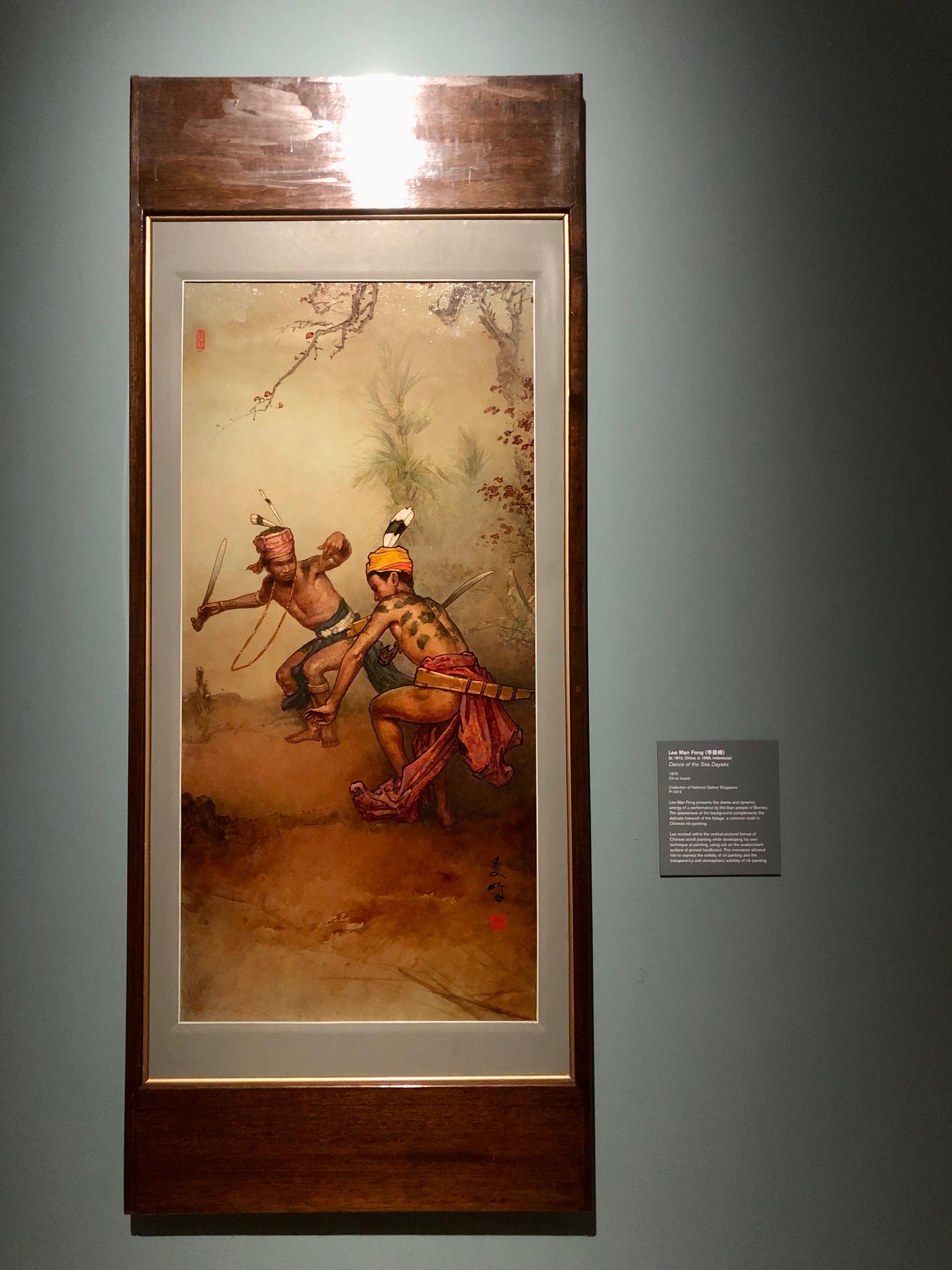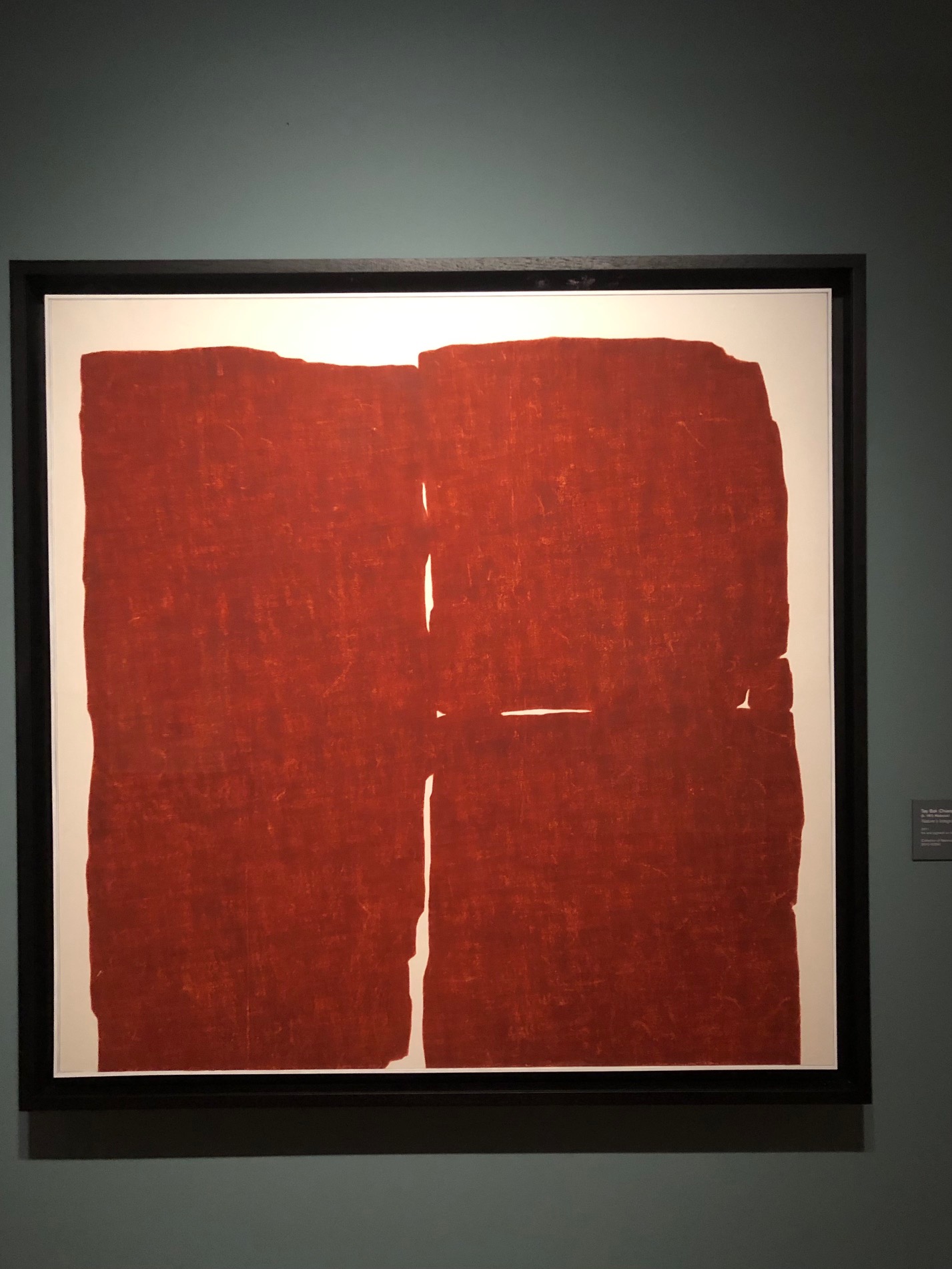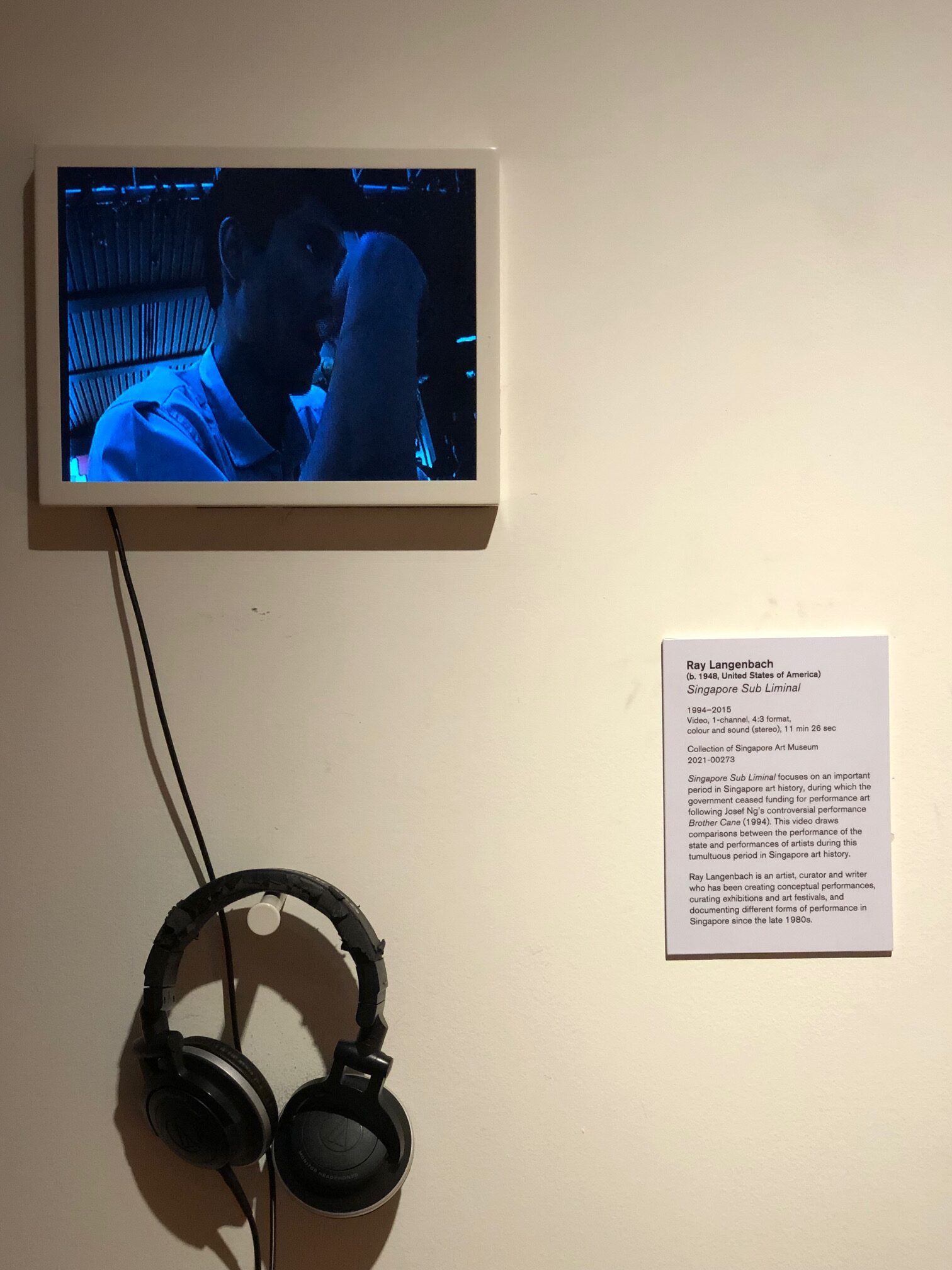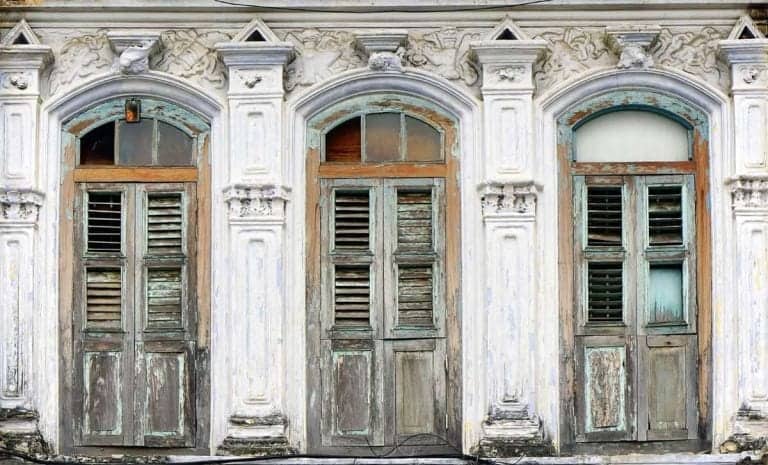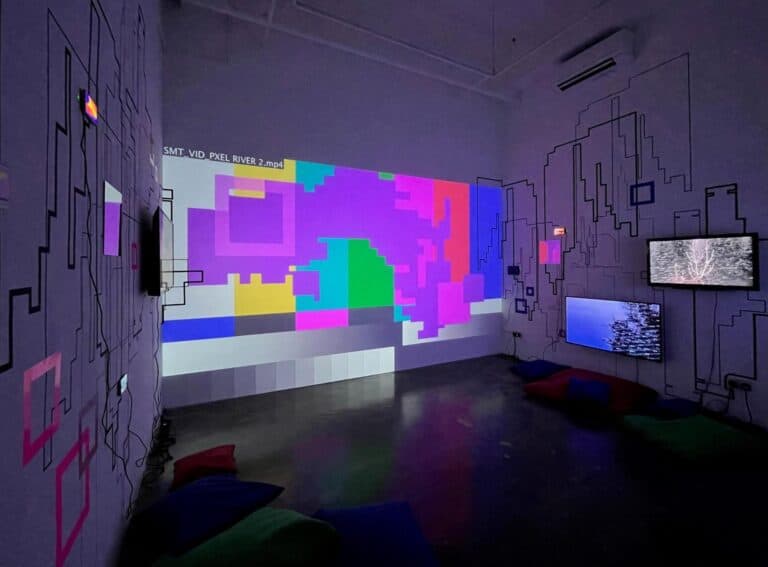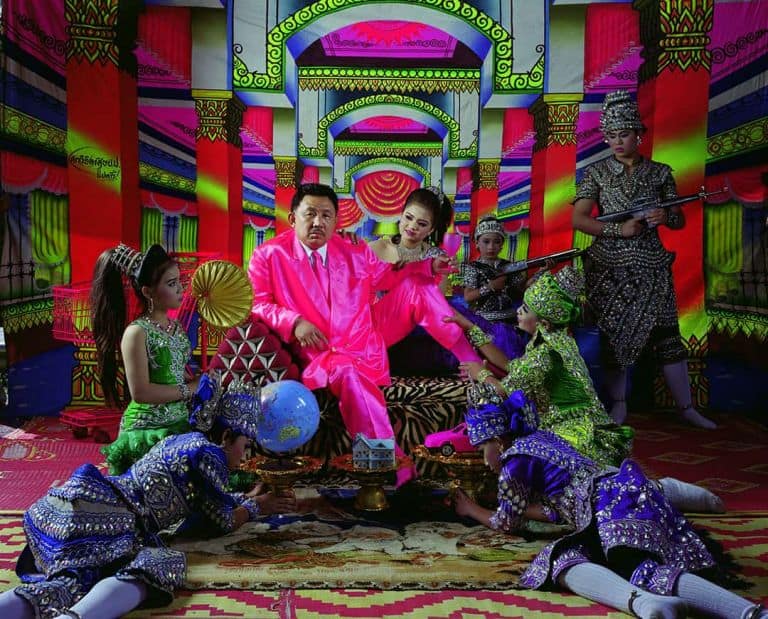“Better late than never” is the appropriate expression here.
This is the first time at Plural we have written about Siapa Nama Kamu? Art in Singapore since the 19th Century, which opened at National Gallery Singapore back in November 2015. It is arguably one of the most significant Singapore art exhibitions in the past decade, with an extensive survey of 300 works.
A spectrum of artistic practices is on display – oil and watercolour paintings, sculpture, photography, mixed-media installations and videos – including many preeminent Singapore artists such as Liu Kang, Abdul Ghani Hamid, and Tang Da Wu. The exhibition closely intersects with the timeline and narrative of Singapore’s national history, from the “growing affluence” of the colonial settlement in the 1800s to the “rapid modernisation” of the past 50 years.
Even if you have visited Siapa Nama Kamu? before, it is a long-term exhibition that is worth repeated visits as about 20% of the works are rotated annually for conservation purposes and to make way for new acquisitions.
After several visits, including a walkthrough with curatorial director Seng Yu Jin, we take a closer look at some critical works and artists to uncover the more obscured aspects of Singapore’s art history.
Early Art Societies and Institutions
The first section, Tropical Tapestry (1800s – 1930s), displays early visual impressions of Singapore. Some displays are more ethnographic, with portraits, photographs, and postcards, which exoticise the native people and landscape. Other works include sculptures and paintings by itinerant European artists like Richard Walker and John Turnbull Thomson.
Amidst these Western works are striking oil paintings by Low Kway Song. Born in Singapore, Low was an active member and art instructor at the Singapore Amateur Drawing Association, one of the earliest recorded art societies established in 1909. His paintings were some of the earliest known oil paintings by a Singaporean artist.
Low Kway Song’s Thai Pyramid Temple (1923) is a recent acquisition and an example of the skill and proficiency of artists who were part of the Amateur Drawing Association.
The works in the second section Nanyang Reverie (1930s – 1970s) reveal more about the history of art societies and institutions in Singapore. The most well-known of these is the Nanyang Academy of Fine Arts founded by immigrant Chinese artist Lim Hak Tai. “Nanyang Artists” who were later associated with the school included Liu Kang, Cheong Soo Pieng and Georgette Chen. Their paintings, which combine Chinese art academy training and Western styles, dominate this section.
But it is the Kampung Wall component of this section, with depictions of village houses by various artists, that reveals the more obscure origins of early art societies in Singapore.
Malay house, Malacca by Mohamed Salehuddin and Kampung I by Abdul Latiff Mohidin shine the spotlight on highly skilled Malay professional artists who made huge contributions to Singapore’s arts scene. Mohamed Salehuddin was a founding member of the Society of Malay Artists Malaya (known as PPMM), one of the earliest registered art societies, formed in the same year as the more renowned Singapore Art Society. PPMM promoted the interest of burgeoning artists across peninsular Malaya. A painting by Lim Cheng Hoe draws attention to the medium of watercolour and the establishment of the Singapore Watercolour Society — which is still active today.
Pioneer Sculptors
The following sections, Real Concerns (1950s – 1970s) and New Languages (1960s – 1980s), move away from the idyllic portrayals of local scenery. It features two contrasting art practices – social realism paintings depicting working-class struggles and modernist works impacted by Western surrealism, minimalism, and abstraction.
Although painting remains the dominant art form in these sections, there is a noticeable emergence of sculptural works. Aside from Ng Eng Teng, who is recognised as a pioneer sculptor in Singapore, there are works by Yeo Hwee Bin and Aw Eng Kwang.
Many people may not be familiar with them but they were trailblazing sculptors in their own right, being two of only seven artists to take part in Singapore’s first sculpture exhibition in 1967. They also worked on many public and commercial commissions, which paved the way for sculpture to be recognised and appreciated as a visual art genre.
Another pioneer sculptor, Vincent Hoisington, was also on display when the exhibition first opened. The work has since been taken down but his works are currently on display at the exhibition Nothing is Forever – Re-thinking sculpture in Singapore.
Plot twists and Unexpected narratives
The fifth section, Tradition Unfettered (1940s – 1980s), focuses on the evolving yet persistent traditions of Chinese Ink. This entire section was updated earlier this year with completely new works, making it one of the most compelling sections now.
It can be difficult to appreciate Chinese Ink, as it requires understanding the cultural and philosophical traditions behind the calligraphy and various components of the depicted landscape.
However, the new displays expand the definition of Chinese Ink traditions with several surprising works. For example, Dance of the Sea Dayaks by Lee Man Fong, was produced in oil paint rather than Chinese ink. However, a closer look reveals details that are reminiscent of Chinese ink paintings, such as the inclusion of stylized tree branches and shrubbery, and the long scroll-like proportion.
On the other hand, Tay Bak Chiang and Tang Da Wu use the medium to explore minimalism and abstract forms. These works show how this section takes a fresh approach that broadens our understanding and appreciation of the Chinese Ink tradition.
Into the Contemporary
The last section Shifting Grounds (1980s – present) displays works from contemporary artists who explore mediums of the ready-made, the conceptual, video art, and avant-garde collectives. Just as the exhibition started by visualising Singapore’s colonial history with images of idyllic tropical landscapes, it closes the loop with works which investigate those historical narratives. Forest, a series of photographs by Simryn Gill and Ho Tzu Nyen‘s Utama – Every Name is History is I, which includes a video and a set of oil paintings, are two such works.
The unexpected narrative comes from the inclusion of a write-up about Josef Ng’s controversial performance, Brother Cane. Performed in 1994, Brother Cane was touted by the media as an indecent act and the government responded by cutting funding for scriptless forms of performance art for ten years.
While sensitive issues of government censorship, self-censorship, and protest are usually skirted around, this exhibition has taken a relatively progressive stance by opening it up for debate. Unfortunately, Josef Ng’s original performance is not still not shown. But there are works by Ray Langenbach, Tang Da Wu, and Suzann Victor, which were created in response to Brother Cane.
The lesser-known aspects of Singapore’s art history we have uncovered here are just the tip of the iceberg. Although Siapa Nama Kamu? is dominated by familiar themes of national history and successful nation building, with terms such as “growing affluence”, “economic progress”, and “rapid modernisation” used in the exhibition text, it is worth the time re-visiting and rediscovering the stories which are hidden in plain sight.
____________________________________
Siapa Nama Kamu? Art in Singapore since the 19th Century is on show at the National Gallery Singapore. Click here for more details.
